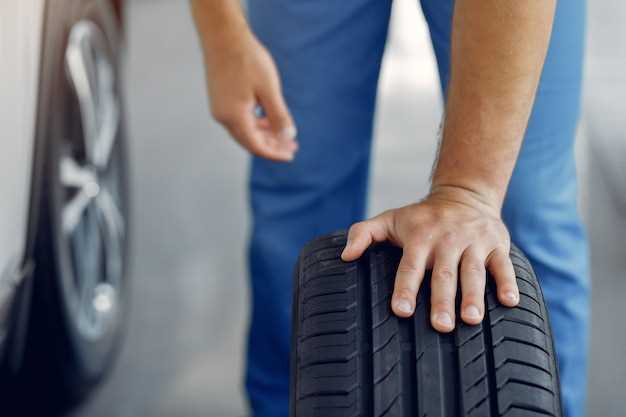
Regular tire rotation is a crucial aspect of vehicle maintenance that can significantly extend the lifespan of your tires. As tires experience varying levels of wear depending on their position on the vehicle, rotating them ensures even distribution of this wear. By following a systematic rotation schedule, drivers can maximize performance and safety while minimizing replacement costs.
Understanding when to rotate your tires is essential for optimal care. Experts typically recommend rotating tires every 5,000 to 7,500 miles, but this can vary based on driving habits, vehicle type, and tire design. Keeping an eye on the tread depth and checking for irregular patterns can also help determine the best timing for rotation.
In addition to extending tire life, regular rotation can enhance fuel efficiency and improve handling. When tires wear evenly, they maintain better contact with the road, resulting in improved traction, which is vital for safe driving. Addressing tire rotation as part of your routine maintenance can lead to a smoother, safer driving experience.
Understanding Tread Wear Patterns and Their Impact on Rotation
Tire wear patterns are critical indicators of how your tires are performing and can significantly affect the effectiveness of tire rotation. Recognizing these patterns helps in understanding when and how to rotate your tires effectively.
One of the most common wear patterns is inner or outer edge wear, which often results from improper alignment or inflation. This type of wear suggests that your tires may not be making full contact with the road surface. Regular rotation can help even out this wear, prolonging the lifespan of your tires.
Cupping or scalloping wear can also occur, where the tread appears uneven and develops high and low points. This wear is generally caused by suspension issues or unbalanced tires and indicates the need for immediate attention. Rotating tires that show these patterns can mitigate noise and enhance overall vehicle performance.
Another type of wear is the center wear, which typically results from over-inflation. When the tire is inflated beyond the recommended pressure, the center of the tread wears faster than the edges. Regular rotation can redistribute this wear but may not solve the underlying inflation issue.
Ultimately, understanding these tread wear patterns is essential in determining the best rotation schedule for your tires. Regular maintenance and timely rotations not only improve road safety but also help you maximize the life of your tires by ensuring even wear across all surfaces.
Determining Optimal Tire Rotation Intervals for Your Vehicle

Establishing the right intervals for tire rotation is crucial for maintaining optimal performance and longevity of your tires. Typically, most manufacturers recommend rotating tires every 5,000 to 7,500 miles, but specific intervals may vary based on your vehicle type, tire model, and driving conditions. Regularly assessing tire wear and tread depth can help determine the best timing for rotation.
Frequent checks of tire wear are essential, as uneven tread wear can indicate alignment issues or improper inflation. If you notice that one tire is wearing faster than the others, it may be time to rotate them sooner than the standard interval. For vehicles with different tire sizes or tread patterns, consulting the owner’s manual is advisable to ensure optimal performance.
In addition to mileage, factors such as driving style and road conditions play a significant role in tire wear. If you frequently drive on rough terrains or in harsh environments, more frequent rotations may be necessary. Conversely, highway driving typically leads to less tire wear, potentially allowing for extended intervals between rotations.
Ultimately, regularly scheduled tire rotations not only enhance the lifespan of your tires but also ensure better handling, traction, and fuel efficiency. Monitoring tire wear and adhering to recommended intervals will result in a safer and more enjoyable driving experience.
Benefits of Regular Tire Rotation for Performance and Longevity

Regular tire rotation is essential for maintaining optimal performance and extending the lifespan of your tires. As vehicles operate, the front and rear tires experience different levels of wear due to variations in weight distribution and driving habits. By rotating tires periodically, you ensure more even wear across all tires, enhancing their performance and lifespan.
One of the primary benefits of tire rotation is improved traction and handling. Tires that wear unevenly can lead to a decrease in grip, especially in adverse weather conditions. By ensuring all tires wear at a similar rate, you promote balanced handling, increasing safety during acceleration, braking, and cornering.
Additionally, regular tire rotation can help prevent premature tire failure. Tires with uneven wear are more susceptible to blowouts, punctures, and other damage, which can lead to unexpected tire replacements. By implementing a tire rotation schedule, you reduce the risk of costly repairs and maintain a reliable vehicle.
Moreover, proper tire rotation contributes to better fuel efficiency. Unevenly worn tires can create drag, forcing the engine to work harder and consuming more fuel. By promoting even wear through rotation, you can maximize fuel efficiency, resulting in savings at the pump over time.
In summary, regular tire rotation is a critical maintenance practice that enhances performance and extends the longevity of your tires. By ensuring even wear, you improve traction and handling, reduce the risk of tire failure, and optimize fuel efficiency.



